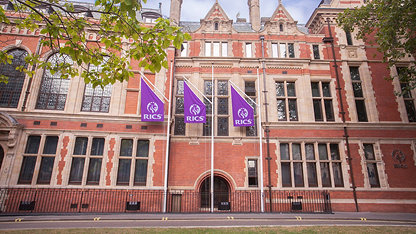The uncharted territories of the seabed are rich in valuable minerals. But does the effort required to get at them outweigh the benefits of deep sea mining?
President Kennedy said: “We choose to go to the moon, not because… [it] is easy but because [it] is hard.” It was 1962, and he was selling the Apollo moon mission to the American public, via a packed rally in Houston, Texas. Had he fancied a real challenge he would have picked the seabed.
Ask the swarm of private firms and government bodies currently prospecting the world’s deep oceans for precious metal deposits, and they will tell you that space flight is a breeze by comparison. Vessels exploring 6,000m down face 600 times the atmospheric pressure of space, which exerts almost zero. And if the salt is not enough to corrode your detection sensors, pH levels around some of the deposits are equivalent to submerging a vehicle in battery acid.
“Deep-sea deposits provide the richest sources of the metals required to keep the world’s technological revolution – from smartphones and hybrid cars, to missile guidance systems – on the road.”
That anyone is putting themselves to the considerable trouble of charting and – before long – mining the deep seabed is a measure of the treasure it contains. As well as the rich deposits of valuable metals – including gold, silver and zinc – the deep seabed contains rare earth elements in concentrations typically unheard of on land. Rare earth metals might occupy an unloved annex of the periodic table, but they turn out to be crucial ingredients in some of today’s most ubiquitous technologies. The catalytic converters that detoxify exhaust fumes rely on cerium. Yttrium, terbium and europium are essential for computer displays. The battery in your Toyota Prius requires about 1.4kg of neodymium to keep the wheels turning. Deep-sea deposits provide the richest sources of the metals required to keep the world’s technological revolution – from smartphones and hybrid cars, to missile guidance systems – on the road.
The ore-rich rock around hydrothermal vents, one of two current targets for underwater mining, also hosts a variety of flora and fauna. This could hold the key to finding the next generation of lifepreserving drugs. Some species contain anti-inflammatory chemicals that promise new treatments for asthma and arthritis. A 2016 clinical trial, the results of which were published by the Lancet Oncology in February 2017, found that bacteria living on the ocean floor brought remission in half of patients suffering from prostate cancer. So behind the mining firms queuing up for deep-sea exploration licences will be large pharmaceutical companies.
As on land, a long queue of prospective miners calling it a gold rush is enough to make environmentalists jumpy. The debate about what deep-sea mining might disturb or destroy along the way is all the more intractable for the paucity of facts available.
Thanks to the appeal of the deep-sea critters it contains, the Mid Atlantic Ridge has lured a few expeditions for hit TV documentaries. For almost everywhere else the prohibitive costs of getting survey equipment below a few hundred metres, means the ecosystems of the world’s deep oceans remain almost entirely shrouded in mystery. “There are areas the size of France that have not been mapped with anything bar satellite gravity measurements,” says Gordon Johnston MRICS, director of Venture Geomatics and Chair of the RICS Geomatics Professional Group, who for 25 years has helped develop the techniques required for offshore surveying.
The data that has been collected, meanwhile, is ambiguous at best. “Even among biologists, there is a spectrum of opinions about whether it is possible to do mining at these depths in a reasonably sustainable way,” says Ian Stewart, senior environmental consultant at Fugro GB Marine in Edinburgh. At these depths, common sense can be a poor guide. Manganese nodules – the second focus of mining efforts after deposits around hydrothermal vents – typically occur as lumps of rock, about the size of baseballs, sitting on – or part-submerged in – the seabed. You would imagine this makes their “harvesting” more environmentally friendly than the diffuse mining and grinding of the rock abutting hydrothermal vents. In fact, the combined effects of removing the nodules and the weight of the harvesting machines on the seabed are likely to change locally affected ecosystems permanently.
“At the Paris climate talks in December 2015, 91 countries set building-specific targets within their emissions pledges and have to report on their progress every five years.”
Despite these hazards, deep-sea mining has some environmental benefits over its terrestrial equivalent. “You typically don’t have to remove a huge surface overburden [everything above the mineral deposit],” says Stewart. And because the ore is more concentrated, you need to remove less of the seabed to extract the ore than on land.
Much of the task of negotiating these fraught environmental pitfalls will fall to the International Seabed Authority (ISA), the body charged by the UN to uphold its 1982 Convention on the Law of the Sea.
Deposits falling within a few hundred nautical miles of a country’s shoreline – known as its “exclusive economic zone” – are for national governments to do with as they please. The first drilling expedition to launch, next year, to Papua New Guinea, has followed an agreement between the country’s government and the Canadian private firm Nautilus Minerals. Beyond that, rule-making is up to the ISA.
Across The Area, as the remaining ocean is forbiddingly named, this body has so far given 27 contracts for exploration, says Lisa Koch, a lawyer at Norton Rose Fulbright in London, who advises mining firms.
The result has been a scrambling of expeditions from private firms to explore the depths with “echosounder” acoustic mapping. The sensors are either mounted on the hull of the survey vessel or, increasingly, on remotely operated vehicles (ROVs) or autonomous underwater vehicles (AUVs), explains Johnston. Besides a few pieces of seabed, the main outcome, he says, is a bathymetric chart – a topographic underwater map comprising depth contours and information about the seabed surface and habitat.
“Like treasure hunters of old, loose talk about where the crop of manganese nodules you have just discovered could mean you return to find a competitor drilling away without you.”
The exploration contracts awarded by the ISA include an obligation to conduct scientific and environmental research to help address the knowledge deficit. With exploration at an early stage, firms have been good about sharing information, says Koch. This may not last. The more commercially valuable the data becomes, the more reluctant firms will be to share it. Like treasure hunters of old, loose talk about where the crop of manganese nodules you have just discovered could mean you return to find a competitor drilling away without you. Smart filtering should help. “You can release depth and gradient data without including information about what the seabed is made of,” says Johnston.
Exploration contracts are one thing. Licences to drill are quite another. And the ISA is yet to issue a single contract for so-called “exploitation”.
The body has little to go on from the UN Convention of the 1982 Law of the Sea, written before much was known about the ecosystems surrounding hydrothermal vents, says Philip Steinberg, director of Durham University’s Centre for Borders Research. “It’s a code written for the management of non-living resources.” The organisation released a second draft of regulations in August 2017, requesting input from firms and governments.
Then there are fiscal questions. “The Area and its resources are the common heritage of mankind,” decrees the 1982 Convention; its exploitation must therefore be to the “benefit of mankind as a whole”. How much to tax the profits of extraction – to distribute mining spoils equitably while ensuring that firms can afford to mine and adhere to environmental laws – will be a special headache. Koch reckons deep-sea mining in The Area will start in 15-20 years.
In the meantime, expect a steady trickle of unilateral agreements between private firms and single governments for deposits within national waters. These deposits – shallower and nearer land – are easier to mine and contracts are easier to strike with one state than with the ISA, which has 168 member states. Governments, meanwhile, will be keen for the foreign direct investment that will flow with well-managed mining licences. Marine biologists may lose more sleep over this fact than engineers.
















